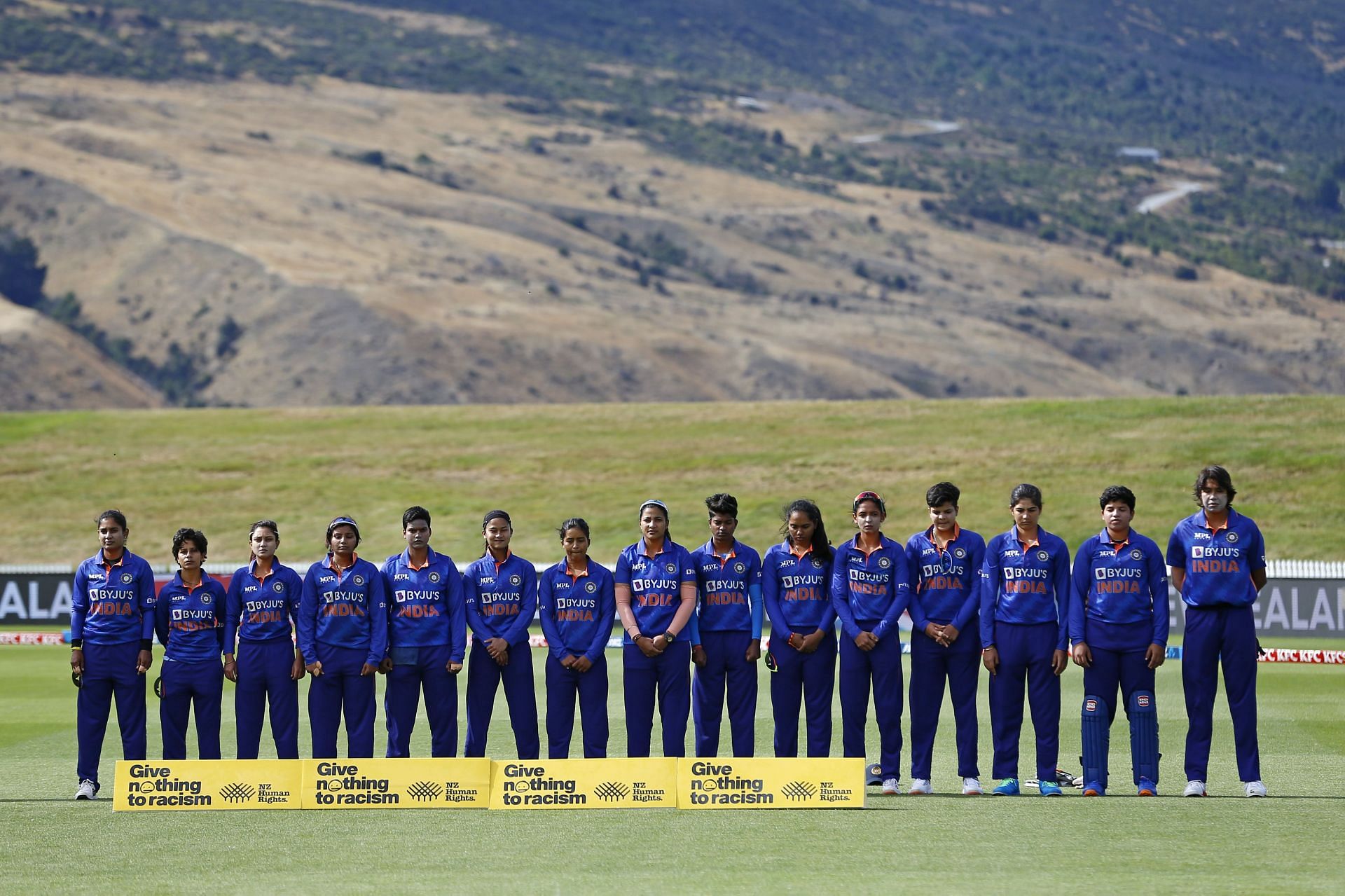
India at the 2022 Women's World Cup: A shot at writing their names in history books
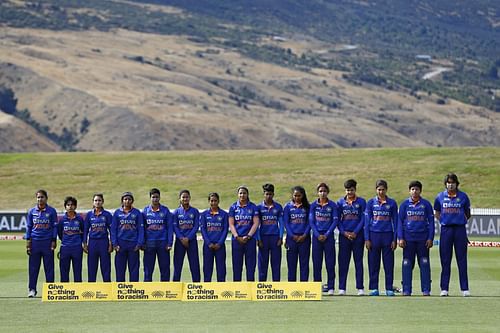
India’s leading wicket taker in T20Is is Yuzi Chahal — 68 wickets. The highest average in successful run chases in ODIs (minimum 50 innings) belongs to MS Dhoni — 102.71. The highest score by an Indian in World Cup knockouts is 137 — by Rohit Sharma. Impressive records, right? Except none of this is true.
India’s leading wicket taker in T20Is is not Yuzi Chahal. It’s Poonam Yadav, with a whopping 98 wickets. The highest average in successful run chases in ODIs (min 50 innings) does not belong to MS Dhoni. It belongs to mithali-raj" target="_blank" rel="noopener noreferrer" data-is-sponsored="false">Mithali Raj. She averages 109.05 in 55 innings in successful run chases.
And the highest score by an Indian in World Cup knockouts is not by Rohit Sharma. It belongs to Harmanpreet Kaur, who scored 171* in a once-in-a-lifetime knock in the 2017 World Cup semi-final against Australia.
The 2022 Women’s World Cup starts in a couple of days and it’s time that we, as fans, do away with this archaic method of following Indian cricket — with all the focus and attention on just the men.
Yes, the BCCI doesn’t inspire any confidence with its administration and marketing of the women’s game, the most recent example of which is the complete lack of build-up for the World Cup on their social media handles. But they did do something right by scheduling the 5-match ODI series in New Zealand (which India lost 4–1) just before the World Cup. They have provided the team with the opportunity to get acclimatized to the conditions that will be on offer in the World Cup.
While the team's long-term preparation has been far from ideal — they have won only 4 out of 16 ODIs (only Pakistan and Zimbabwe have a worse win/loss ratio) in the last year, they will take heart from how they competed in the series against NZ and more importantly, how they progressively got better.
They have also played and won both their warm-up games against South Africa (which had its own share of controversy surrounding it thanks to the appalling lack of effort shown by all administrative parties involved, including the ICC, BCCI, and CSA) and West Indies, and are now looking in decent shape to start their quest to go one step further than last time.
The Squad
Mithali Raj (C), Harmanpreet Kaur (VC), Yastika Bhatia, Smriti Mandhana, Richa Ghosh, Shafali Verma, Deepti Sharma, Taniya Bhatia, Sneh Rana, Jhulan Goswami, Pooja Vastrakar, Meghna Singh, Renuka Singh Thakur, gayakwad" target="_blank" rel="noopener noreferrer" data-is-sponsored="false">Rajeshwari Gayakwad, Poonam Yadav
Reserves: Ekta Bisht, Simran Dil Bahadur, Sabbhineni Meghana
Openers
Smriti Mandhana, Shafali Verma, Sabbhineni Meghana (Reserve)
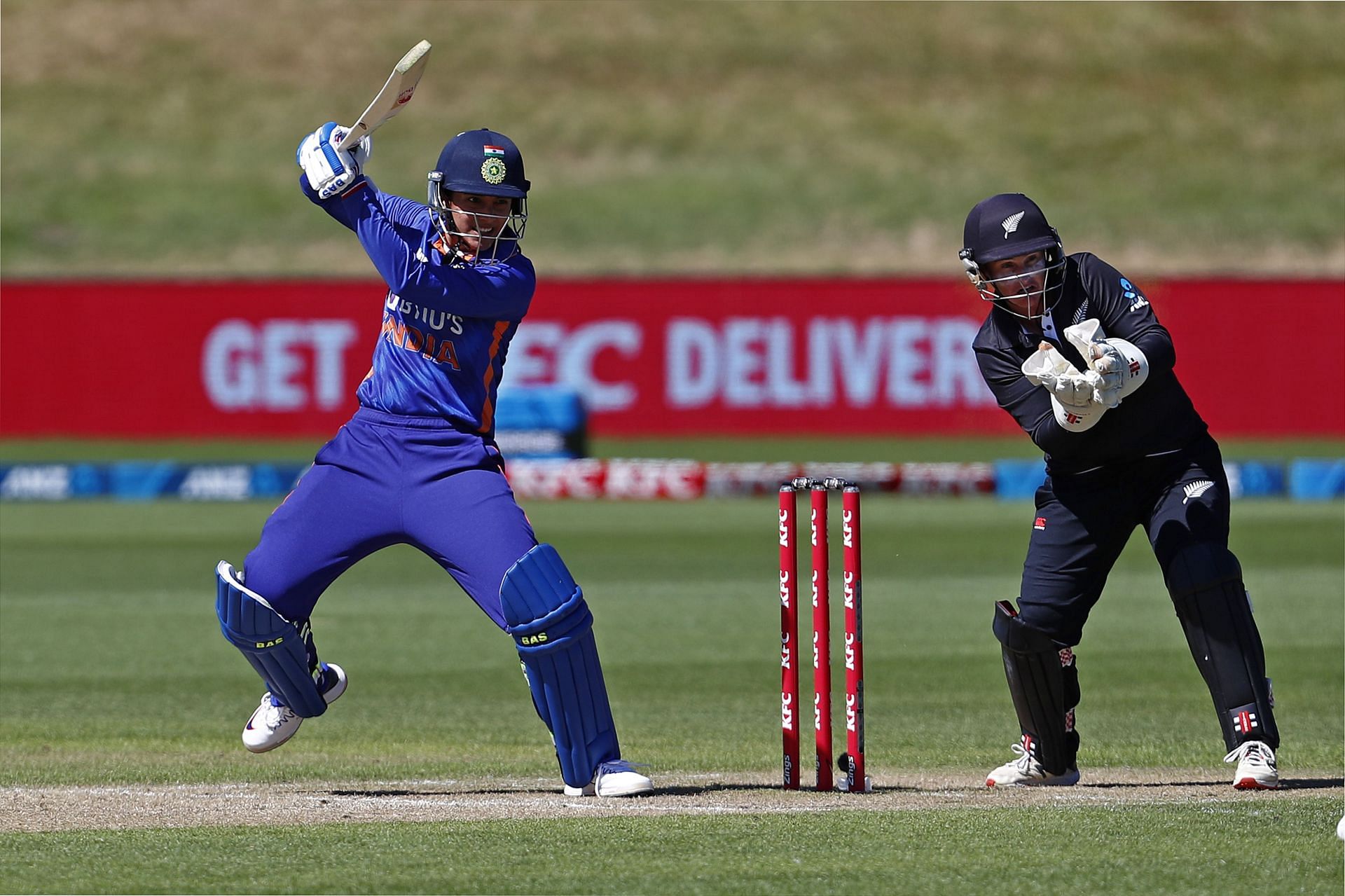
While India boast of a well-established and fearsome opening partnership on paper in Smriti Mandhana and Shafali Verma, they haven’t been in great touch of late. In the past year, Mandhana has scored 436 runs at an average of 36.33 and a SR of 86.33, which is pretty decent. Shafali, however, has only scored 260 runs at an average of 23.63 and a SR of 75.14.
The importance of this opening partnership for India’s World Cup campaign can’t be overstated. They have averaged 40.62 and scored at 5.80 rpo in the last 12 months. No other opening pair around the world, which has opened more than 5 times in this period, have scored at over 5 rpo. Given the construct of India’s middle order and how it takes time to get going, it becomes imperative that at least one of the openers bats big and bats through.
There have also been a few voices asking for the inclusion of Sabbhineni Meghana into the main squad given how wonderfully she performed while opening against NZ. She scored 114 runs in three innings at an average of 38 and a SR of 108.57. While that has not happened, the team and management can rest assured that they have an in-form and destructive batter ready if required.
Middle order
Yastika Bhatia, Mithali Raj, Harmanpreet Kaur
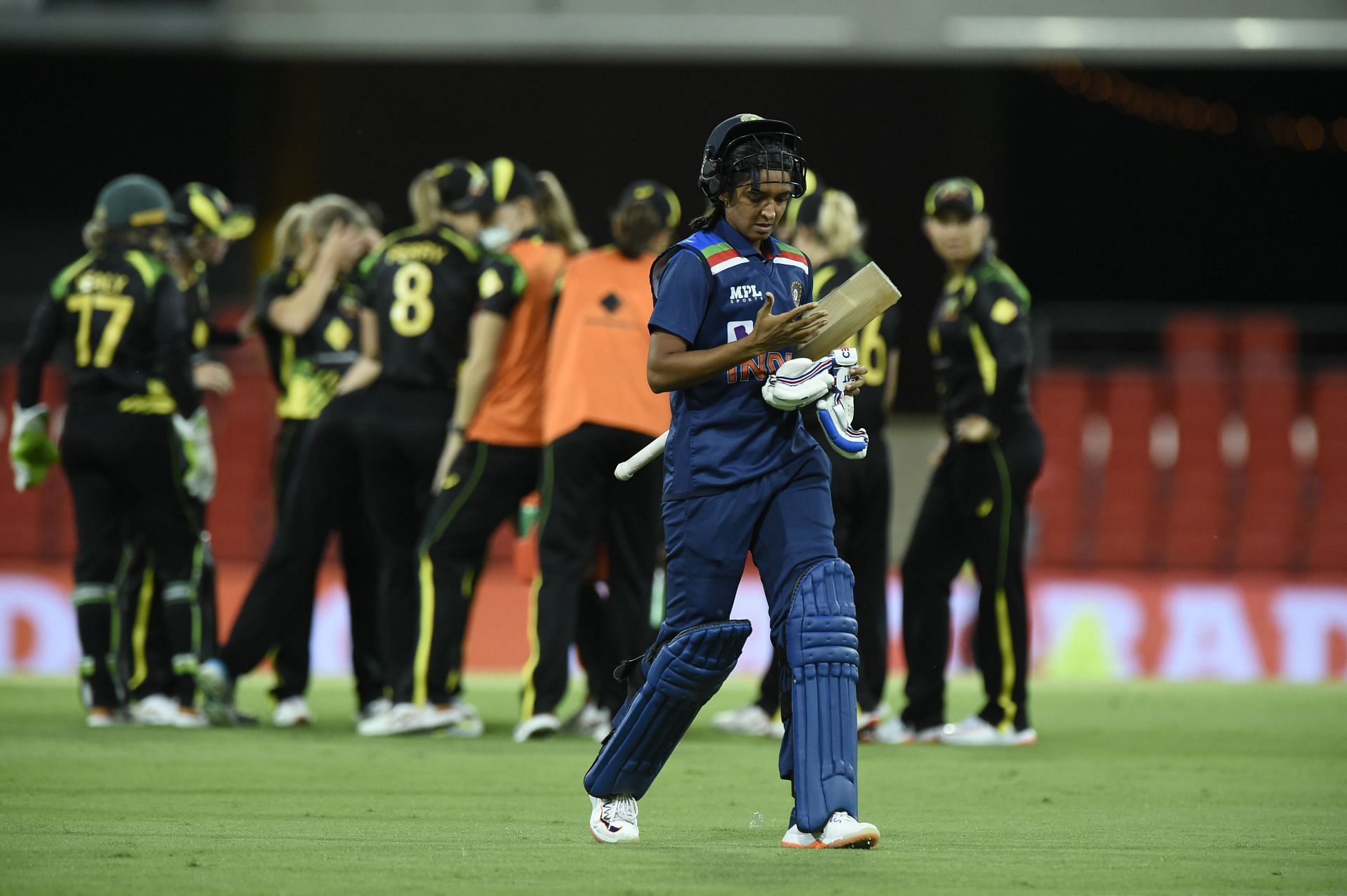
Yastika Bhatia made her debut less than six months ago in Australia, and impressed one and all with her technique and youthful confidence. She is just 21 years old but the way she handled the Australian quicks on the bouncy surfaces of Australia showed maturity beyond her age.
She has played 7 ODIs so far, averaging 27.57, and striking at 73.94. While she starts off a little slow (SR of 53.33 in the first 15 balls) like almost every batter, she doesn’t take a lot of time to catch-up (SR of 80+ after first 15 balls). And she is a left-hander, which makes her a vital cog at number 3.
Mithali Raj divides opinions like no other in the women’s game for her intent (or lack thereof). While a lot of the criticism is justified, she is also the only batter in the Indian middle order who has consistently made runs in the last few years.
Except for her, no other Indian batter has scored more than three 50+ scores from positions 4–7 since 2018. Now it is well documented how she takes a lot of time to get going in her innings, plays a lot of dot balls (58% dot balls since 2018) and does not rotate strike as much (37.31 strike rotation % since 2018).
But she has made visible adjustments to her game and has shown improvement on all of these fronts in the recently concluded NZ series (45.2 dot%, and 49.11 strike rotation%). She will be the fulcrum around which the Indian middle order will revolve and if she keeps playing like she did in the NZ series, it will make the other batters' jobs a lot easier.
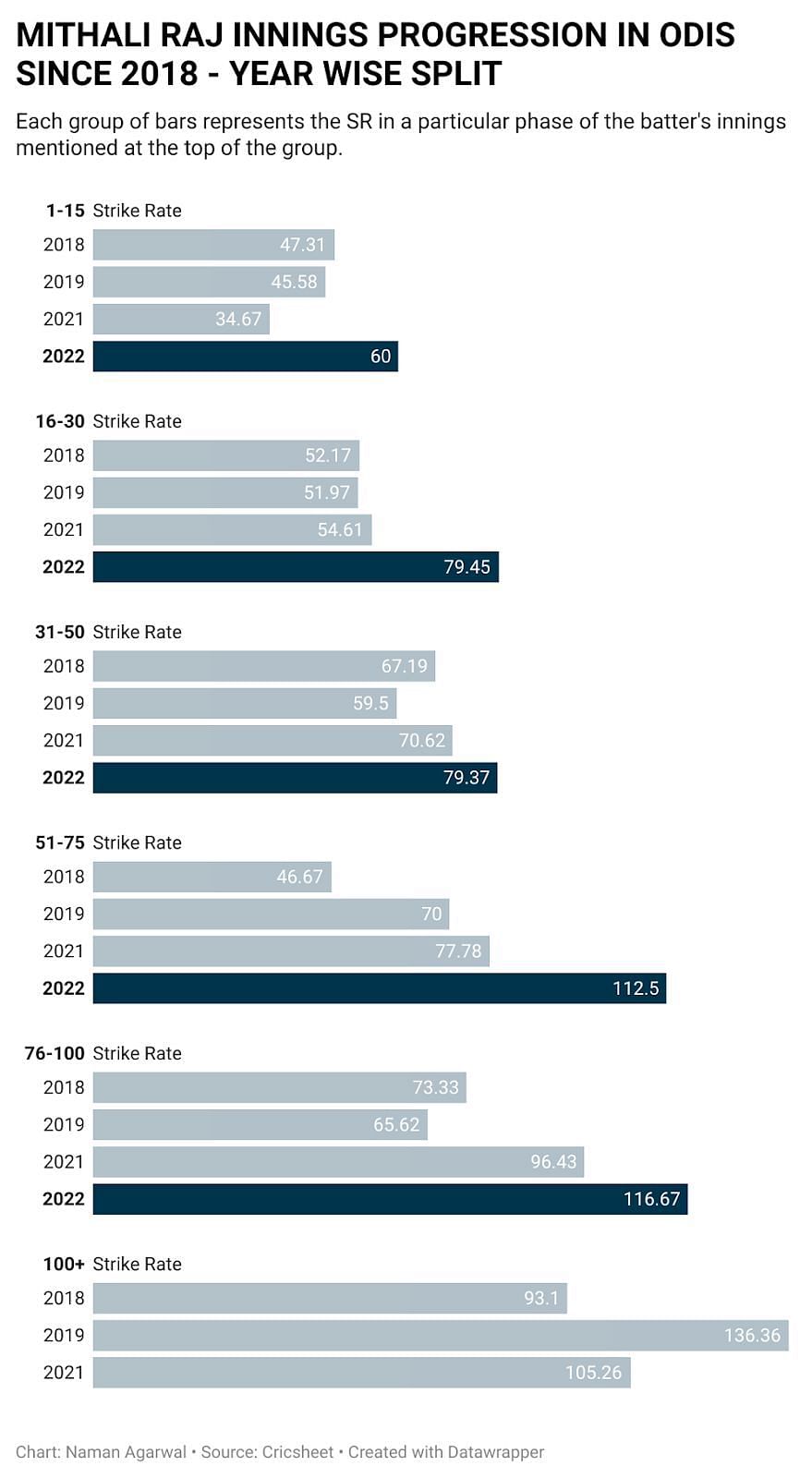
The team's vice-captain Harmanpreet Kaur was going through an extended rough patch in international cricket coming into the NZ series. She did not get a decent score in the first 3 matches of the series and there were legitimate concerns regarding her place in the XI.
It then didn’t help when she was ’rested' in the 4th ODI, with Deepti Sharma being told that she would be the vice-captain for the last 2 games. But somehow the stars seem to have aligned for Harman at the right time. She made a crucial 63 in the final ODI, taking India to victory, following that up with a hundred in the warm-up game against SA.
While her preferred spot is at number 4 (average of 40.45), she has been batting at 5 (average of 26.84) for India. Mithali promoted her in the last ODI against NZ, coming in at 5 herself.
While this can’t be a permanent fix, India should look to be flexible and get Harman in at 4 if the 2nd wicket does not fall too early. And given how she has improved on her scoring rate recently, Mithali at 5 wouldn’t be a bad proposition, especially given the Indian lower order’s propensity to collapse.
Wicketkeepers
Richa Ghosh, Taniya Bhatia
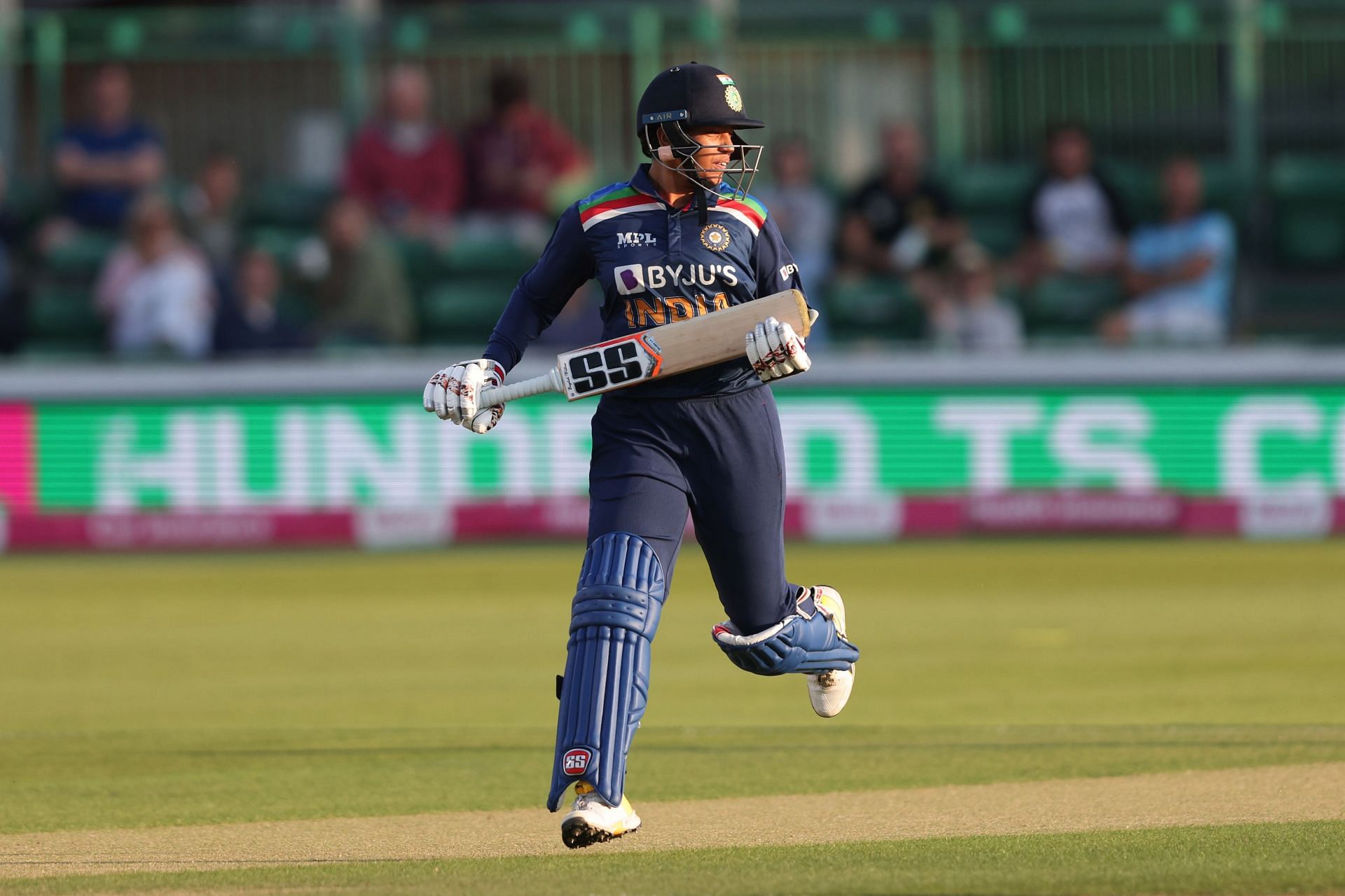
It might be an understatement to say that India has unearthed a gem in Richa Ghosh. She is just 18 years of age and has already had a massive impact in the Indian limited-overs set-up. She provides that firepower lower down the order, which the Women in Blue has lacked.
In fact, she is the only batter worldwide who has scored more than 200 runs at a SR of more than 100 in the last 12 months in ODIs. And to top it all, she is in great form, having scored two 50s in the NZ series. India will depend heavily on her for finishing duties throughout the World Cup.
The other keeper in the squad is veteran Taniya Bhatia. With the arrival of Richa, she has been pushed down the pecking order. While her batting credentials might not be as prominent and eye-catching as Richa’s, she can do a decent job with the bat if and when required.
Spin-bowling options
Deepti Sharma, Sneh Rana, Rajeshwari Gayakwad, Poonam Yadav, Ekta Bisht (Reserve)
Deepti Sharma and Sneh Rana are the two spin-bowling all-rounders India have in their squad. While Deepti has been around for a while and has become a crucial member of the set-up, Rana came back into the limelight on the England tour last year, where Mithali termed her as the “find of the tour”.
Deepti can be used as a floater in the batting lineup. She has experience playing in all positions from 1–7. Lately she’s been mostly used at 6 (8 innings since 2020 at an average of 43.20 and SR of 75.79).
But if the last ODI of the New Zealand series is an indication of things to come, India might be looking to use her at 3, in place of Yastika Bhatia. This would allow them to free up a slot for Richa Ghosh at 6, while also allowing them to play an extra bowling option.
Deepti's bowling will be crucial, especially if she plays as the 5th bowler. She has struggled with the ball off late. In the middle overs since 2020, she has taken only 8 wickets at an average of 57 and an economy rate of 5.5.
Her best phase for bowling has been in the powerplay where she has taken 3 wickets at an average of 11.67 and an economy rate of 3.50 in the past year. While starting with a spinner in ODIs is not common, India could look to give Deepti some overs in the powerplay overs.
Sneh Rana has made some telling contributions with the bat from 7 and 8 in the last few months and has been decent with the ball. But like Deepti, she hasn’t been able to pick up a lot of wickets in the middle overs either.
Rajeshwari Gayakwad and Poonam Yadav are the two frontline spinners in the squad. Gayakwad’s a left-arm orthodox spinner and has been brilliant in both the powerplay and at the death. Yadav, India’s premier leg spinner, has had a tough time though. She has only managed to pick 7 wickets in 11 innings since 2020 at an average of 69.43.
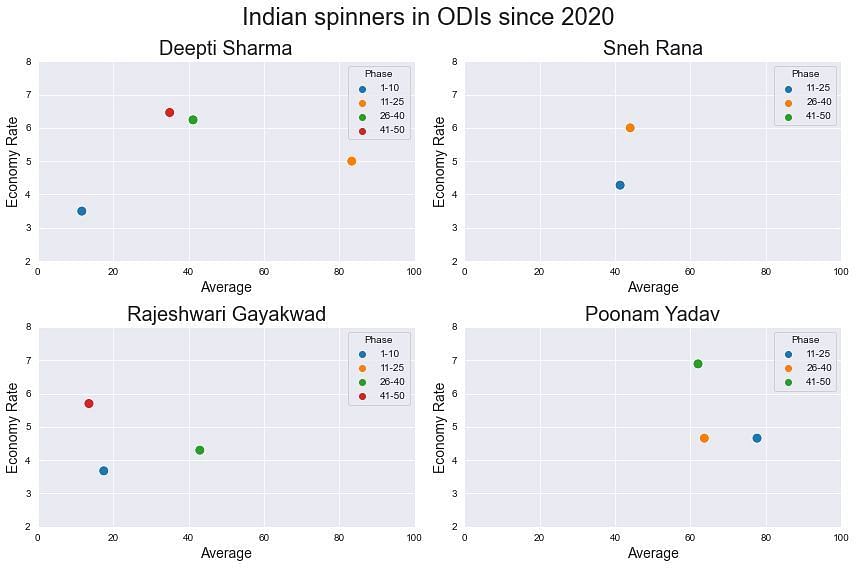
For India to have a successful campaign, the spinners will need to find a way to get breakthroughs in the middle overs, one of the team’s biggest problems lately. Deepti Sharma and Rajeshwari Gayakwad look like certain starters at the moment, with Sneh Rana’s place depending on the team combination the management decides to go in with.
Pace-bowling options
Pooja Vastrakar, Jhulan Goswami, Meghna Singh, Renuka Singh Thakur, Simran Dil Bahadur (Reserve)
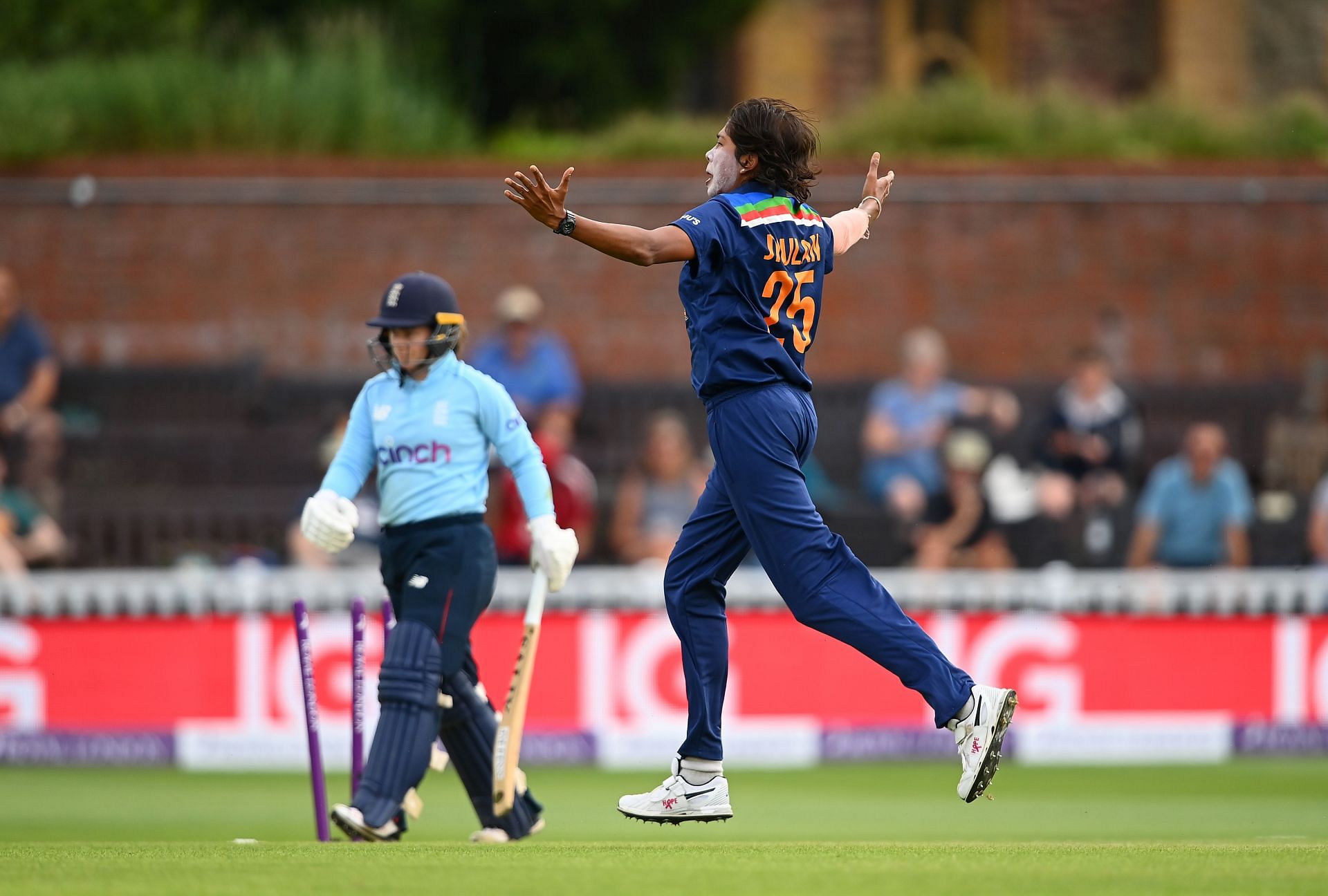
Jhulan Goswami is 39 years old. It is typically the age where cricketers are starting or growing into their coaching or commentary careers. But here is Goswami, about to play in her 5th ODI World Cup, and leading her side’s pace bowling attack.
What she might have lost in pace due to her age, she is making up for with her experience and control. In fact, she has been India’s leading wicket-taker in ODIs since 2020, with 20 wickets in 13 innings. Such is her importance in the side that if she has a good World Cup, India might have a good World Cup too, but if she doesn’t, the team almost certainly won’t.
Pooja Vastrakar is another pacer whom the team management have been trying to invest in and possibly groom as Jhulan’s successor. She can strike the ball well lower down the order too.
But she has issues with her accuracy. In the 13 ODIs she has played so far, she has only taken 6 wickets at an average of 70.50 and an economy rate of 5.95. While her bowling figures don’t inspire a lot of confidence yet, the quality is there, and if India decide to go in with one batter short, she might get to play at 8.
The two other pace bowling options India have are in the form of Meghna Singh, and Renuka Singh Thakur. Both are right-arm medium pacers and both have been inducted into the team inside the last 6 months.
Renuka was the leading wicket-taker in the 2019–20 Senior Women’s One Day League, India’s domestic One Day competition for the Women. Both have had fairly decent starts to their international careers so far, having played 5 and 2 ODIs respectively. The duo will need to support Jhulan to the best of their abilities as and when required.
The Mithali Raj-led side begin their campaign with a clash against arch-rivals Pakistan on the 6th of March at the Bay Oval in Mount Maunganui. While we all knew that Pakistan had never beaten India in World Cups before they eventually did in the Men’s T20 World Cup last year, what most of us probably don’t know is that the Pakistan women’s team has never beaten the Indian women’s team in any ODI match ever.
India have played Pakistan 10 times in ODIs, the last of which came in the previous World Cup, and have beaten them each time. Yet, you don’t see commercials and campaigns and new renditions of "Mauka Mauka" being written in anticipation of this encounter.
While nothing can be done about that, we as fans can surely start doing better, and make sure that we give the Women In Blue the respect, recognition, and hype they so richly deserve. And remember that it is Poonam Yadav who has the most wickets for India in T20Is, that it is Mithali Raj who has the highest average in successful run chases, and that it is Harmanpreet Kaur who has the highest score by an Indian in World Cup knockouts.